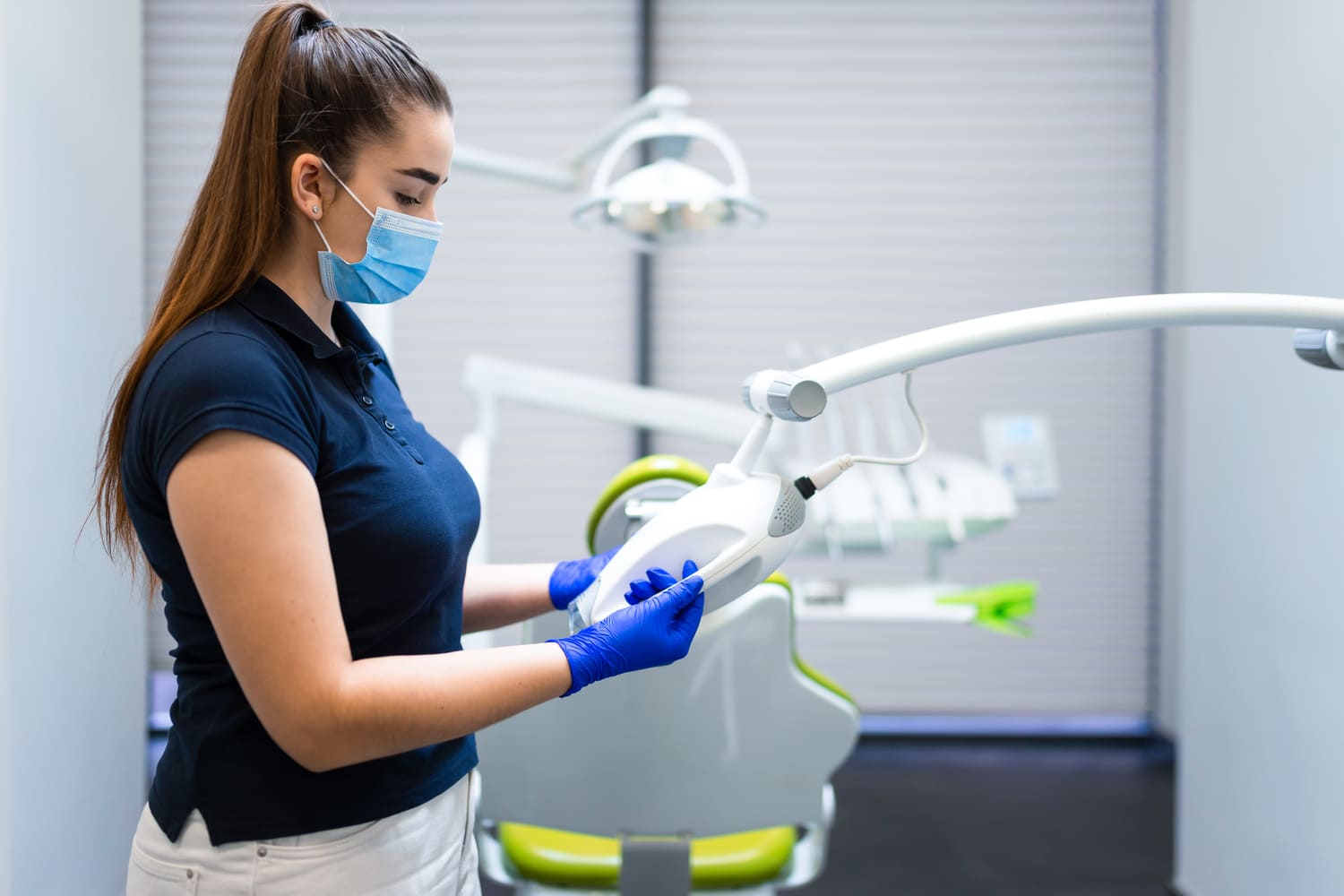Preventing cross-contamination in a dental clinic is one of the most important responsibilities for any practice. With every patient interaction, tools, surfaces, and even the air can become vehicles for bacteria and viruses. Knowing how to prevent cross-contamination in dental clinics is not only a matter of hygiene — it’s a core part of patient safety, compliance, and your professional reputation.
In Charlotte and throughout North Carolina, dental practices are held to high standards. From the sterilization of instruments to hand hygiene and airflow control, preventing cross-contamination requires a combination of processes, staff training, and the right partners.
What is Cross-Contamination?
Cross-contamination occurs when bacteria or viruses are transferred from one person, object, or surface to another. In a dental setting, it can happen easily:
- Using the same gloves between patients or surfaces
- Improper sterilization of tools
- Touching clean instruments with contaminated hands
- Not disinfecting surfaces like light handles, keyboards, and drawer pulls
- Airborne pathogens traveling from patient to practitioner or between rooms
One lapse in protocol can affect the entire clinic — and worse, patient health.
Strategies to Prevent Cross-Contamination
1. Use Personal Protective Equipment (PPE) Correctly
Gloves, masks, gowns, and eye protection are your first line of defense. Change gloves between every patient and never touch non-sterile surfaces once gloves are on. Masks should cover both the nose and mouth completely and be changed between procedures or when moist.
2. Follow Strict Hand Hygiene
Hands should be washed with soap and water or an alcohol-based hand sanitizer:
- Before and after every patient interaction
- After touching any contaminated surface or bodily fluids
- Before handling clean or sterile instruments
3. Sterilize Instruments Thoroughly
Use autoclaves or chemical sterilizers for all tools that come into contact with oral tissue or fluids. Ensure:
- Tools are scrubbed or pre-cleaned before sterilization
- Instruments are properly bagged and labeled
- Sterilization logs are maintained with every cycle
4. Use Barriers and Covers
Plastic wraps or sleeves should be used on high-touch items like:
- Light handles
- Computer mice and keyboards
- Chair controls
- Suction devices and hoses
Replace these between each patient.
5. Separate Clean and Dirty Zones
Treatment rooms should have clearly designated zones:
- “Clean” zones for new tools and materials
- “Dirty” zones for used instruments and waste Never cross materials or tools between these areas during a procedure.
6. Disinfect All Surfaces Regularly
Use EPA-registered hospital-grade disinfectants on:
- Dental chairs and armrests
- Work surfaces and trays
- Door handles, drawer pulls, and faucets
- Restrooms and break areas
Disinfect before and after every procedure and at the start and end of each day.
7. Train and Monitor Staff
Even the best protocols fail without consistency. Provide:
- Ongoing training on infection control
- Checklists and visual reminders
- Regular observations or audits
Role of a Professional Cleaning Partner
While your team manages in-procedure sanitation, a professional cleaning company like Commercial Cleaning Masters ensures that the entire clinic environment stays safe and compliant. We handle:
- Deep cleaning and disinfection of all treatment and non-clinical areas
- Floor and air duct sanitization
- Restroom and lobby cleaning
- Overnight cleaning schedules to avoid disruption
Our cleaners are trained to work in regulated medical spaces and know the importance of barrier systems, chemical usage, and OSHA compliance.
Final Thoughts
Preventing cross-contamination is a daily mission — not a one-time effort. By combining strict internal protocols with the support of a trusted cleaning partner, your dental clinic can operate with full confidence.If your clinic is in Charlotte or nearby, contact Commercial Cleaning Masters. Let us help you provide a truly safe space for every patient, every day.

